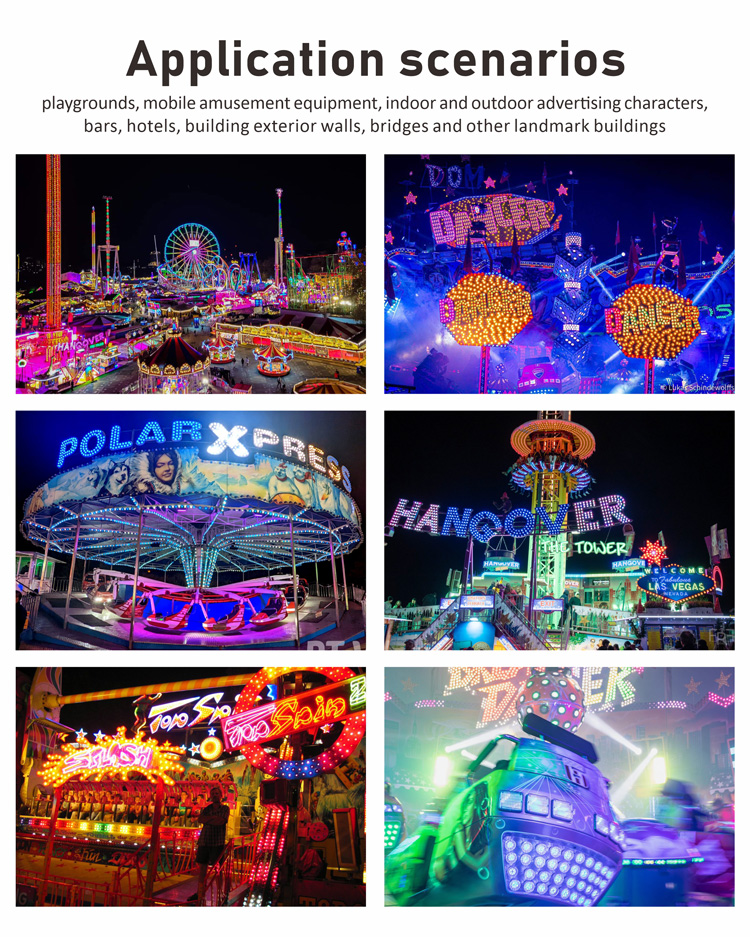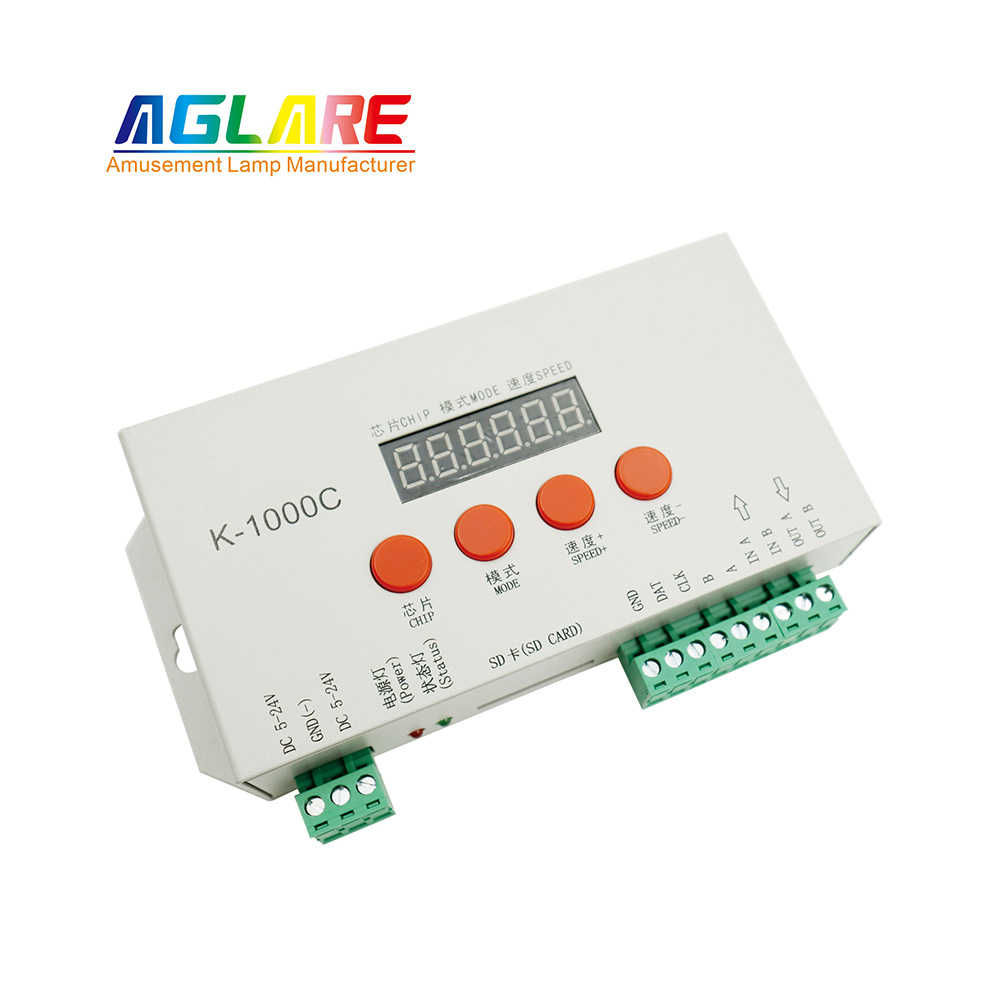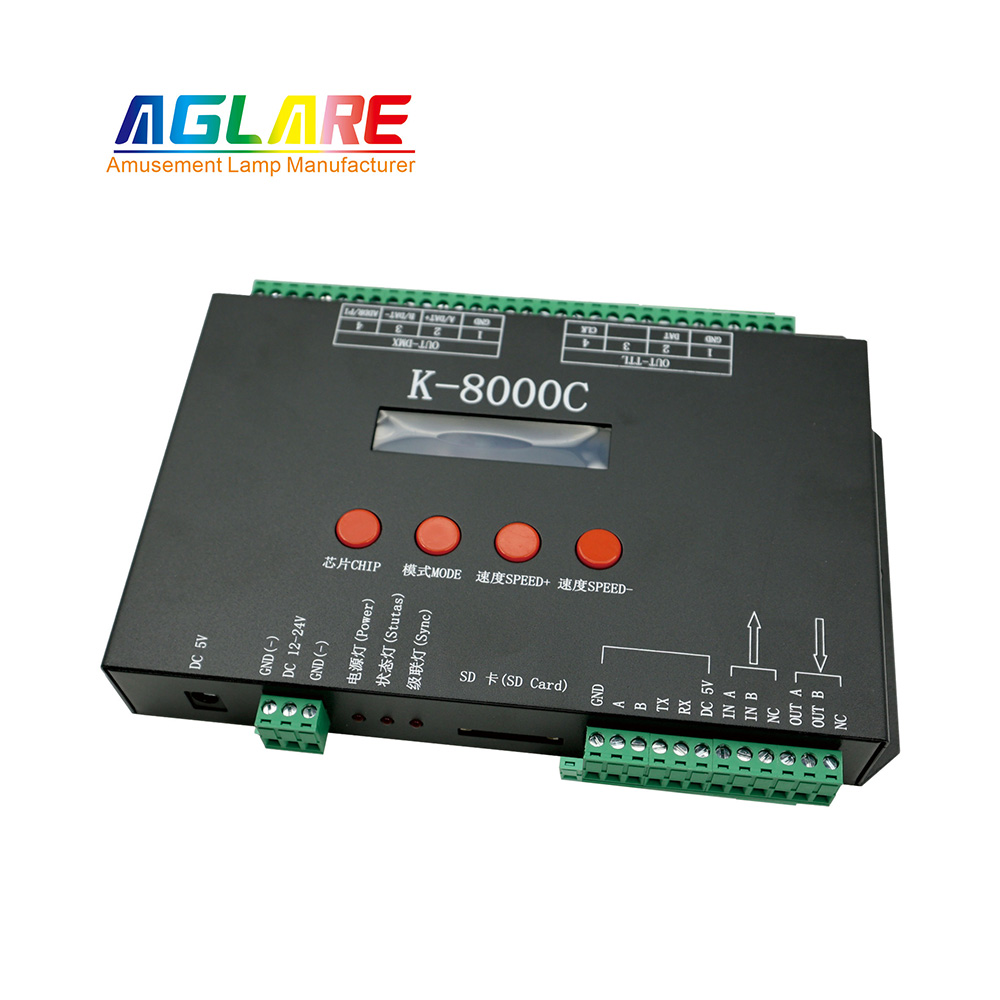LED light controllers are essential components for managing and enhancing the lighting effects in amusement parks. These controllers allow for dynamic and customizable lighting displays that can significantly improve the ambiance and visitor experience. Here are some key points to consider when choosing LED controllers for amusement park LED lights:
Choosing the Right LED Controller
When selecting an LED light controller for an amusement park, consider the size and complexity of the installation, the desired effects, and the level of customization needed. For large-scale projects, a combination of different types of controllers might be necessary to achieve the desired results.
For example, a DMX controller could be used for complex shows and performances, while stand-alone controllers might be sufficient for static displays or less demanding areas. WiFi controllers can provide flexibility and ease of use, especially for areas that require frequent changes or updates.
Types of LED Light Controllers
1. DMX Controllers:
•Functionality: DMX (Digital Multiplex) is a widely used protocol for controlling stage lighting and other effects.
•Features: Typically used for complex lighting setups, allowing control over multiple channels, scenes, and effects.
2.K-1000C and K-8000C SD card led controller for digital led amusement lamp,
led strip,pixel led
Controller, a port output, may bring 1024/2048 light.
Off-line control, play back content stored in the SD card
K-8000C store a maximum of 16 documents

3. WiFi / Bluetooth Controllers:
•Connectivity: Allow remote control via smartphones or tablets.
•Flexibility: Ideal for updating lighting effects on-the-fly and integrating with mobile apps.
4. Stand-Alone Controllers:
•Ease of Use: Pre-programmed with various lighting effects.
•Portability: Suitable for temporary installations or areas without access to wireless networks.
5. MIDI Controllers:
•Music Synchronization: Enables lights to sync with music, enhancing the immersive experience.
•Applications: Popular for shows and performances where lighting needs to be synchronized with audio tracks.
6. Arduino-Based Controllers:
•Customizability: Offers advanced users the ability to program custom effects using open-source software.
•Scalability: Can handle large lighting systems with numerous LED strings.
Key Features to Consider
1. Channels and Zones:
•Number of Channels: Determines how many separate lighting zones can be controlled independently.
•Zones: Allows for more detailed customization and control over specific areas of the amusement park.
2. Color Mixing and Effects:
•RGB and RGBW Support: Capable of producing a wide range of colors and shades.
•Dynamic Effects: Features like fading, strobing, and color cycling.
3. Timers and Scheduling:
•Automation: Ability to set up automatic lighting schedules.
•Energy Efficiency: Helps reduce energy consumption by automatically turning off lights during non-operational hours.
By carefully evaluating these factors, you can choose the most appropriate LED light controllers to enhance the lighting and overall experience at your amusement park.





